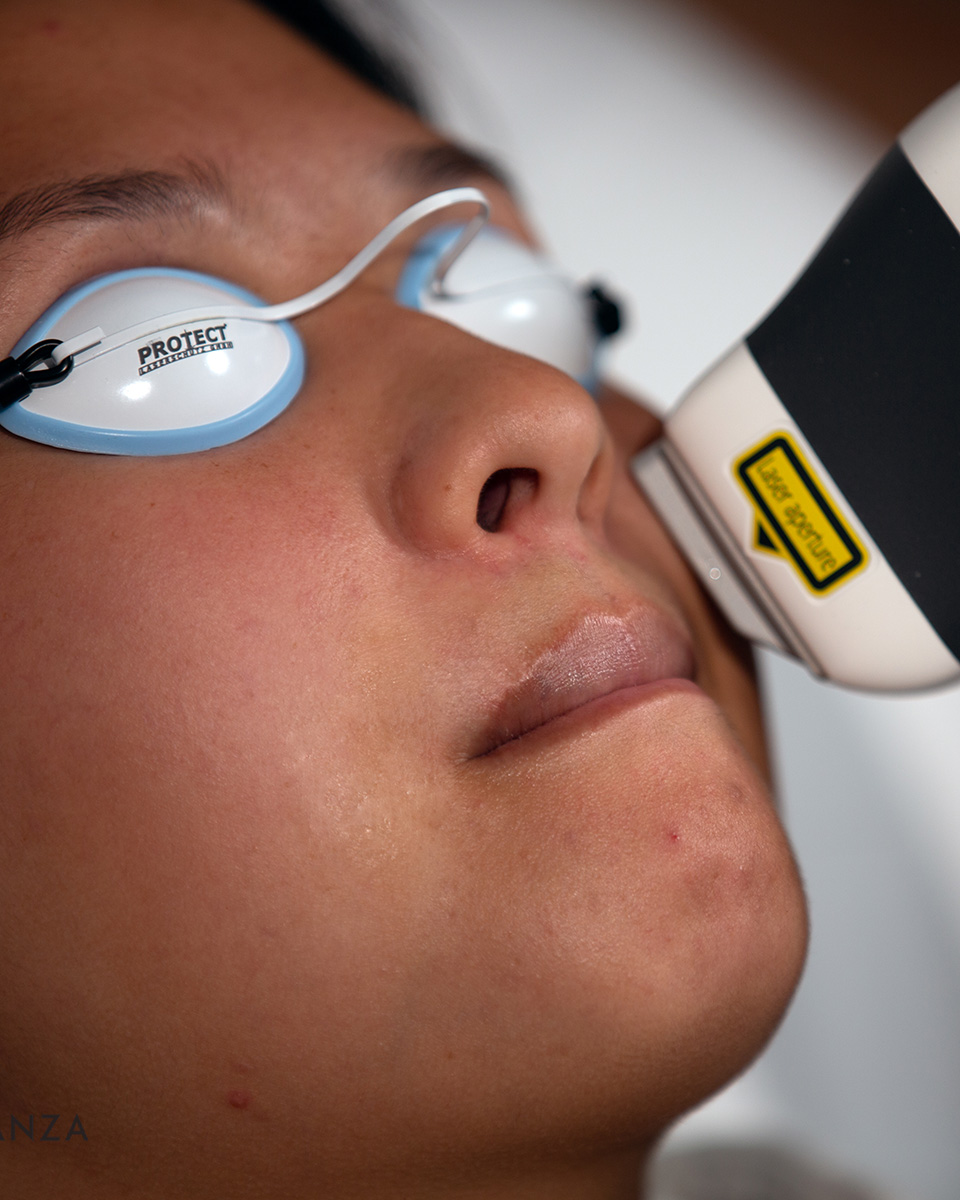About Hair Removal
Learn more about advanced hair removal methods, how they came about, and which is the best for you and your business.
What is National Hair Removal Day?
National Hair Removal Day (March 3rd) is an annual celebration of advanced hair removal procedures, including laser hair removal, electrolysis, waxing, and more! Millions of individuals worldwide deal with bothersome hair on at least one area of their bodies. Luckily, getting smooth skin has never been easier, thanks to the numerous hair removal methods available today.
Laser hair removal, for example, is a widely popular hair removal procedure that’s preferred because of its fast treatment time, minimal discomfort, and ability to deliver permanent hair reduction in just a handful of treatments. Although a more timely procedure than laser hair removal, electrolysis uses electric currents to damage hair follicles one by one. Many spas also offer waxing to remove hairs from the root temporarily.

Hair Removal Methods


While there are several methods to remove unwanted hair, National Hair Removal Day specifically highlights the procedures performed by professional businesses, such as laser hair removal, electrolysis, and waxing. Other methods, such as at-home remedies like shaving, plucking, threading, creams, and medications, are celebratory as well but often result in temporary outcomes, high costs over time, and frequent maintenance. So, let’s dive into the more effective, longer-lasting techniques!
Understanding How Hair Grows
Understanding the hair growth process will help you learn which hair removal method makes the most sense for you. Hair grows in a continuous cycle consisting of three phases: the anagen phase, the catagen phase, and the telogen phase.
The anagen phase, known as the active growing phase of hair follicles, is the longest phase in the hair growth cycle. During this phase, a hair shaft is attached to the bulb and papilla – hair follicle structures comprised of cells and connective tissue that nourish hair and generate growth. The duration of the anagen phase varies based on genetics and hair type but can last up to 3 to 5 years for scalp hair. Some individuals experience longer anagen phases and long hair, while others see little growth in the same timeframe. 80-90% of hairs are in the anagen phase.
The catagen phase follows the anagen phase and lasts about two to three weeks. Also known as the transition or regression phase, the catagen phase is when hair is cut off from its blood supply, ultimately stopping hair growth. As a result, the outer root sheath of the hair follicle shrinks and attaches to the root of the hair, starting the formation of a club hair, which leads to the telogen phase.
The telogen phase, also called the resting phase, is when a club hair is completely formed and rests in place. Telogen hairs may not shed for three to four months. Instead, the club hair rests in place until a new anagen phase hair pushes it out. 10-20% of hairs are in the catagen or telogen phase.
Procedures like laser hair removal and electrolysis are most effective on hairs in the anagen phase when they’re visible and still receiving growth nourishment.
Electrolysis
Electrolysis is the only FDA-approved method for permanent hair removal. This procedure involves emitting an electrical current to the follicle root using a fine needle or thin wire. The electrical current destroys the hair root, preventing the hair from regenerating.
While electrolysis is permanent, one of the biggest drawbacks is that it’s very time-consuming. Individual strands of hair must be treated one at a time, making areas like the back, chest, legs, and other large treatment areas several hours to treat. Furthermore, electrolysis is known to be quite uncomfortable and painful for many. Patients require a minimum of 8 to 12 repeated treatments up to 12 to 18 months.



Laser Hair Removal
Laser hair removal is one of the most popular and effective methods for removing unwanted hair. It’s a newer method than electrology and is FDA-approved for permanent hair reduction. However, don’t let this phrasing fool you. Laser hair removal produces permanent results for a majority of patients and can remove up to 95% of hairs thanks to its speed and accuracy. Numerous laser technologies are available today that are safe to use on different skin types; some are safer for darker skin types than others. Lasers work by emitting light at different wavelengths, energy levels, and pulse widths.
Laser hair removal is commonly confused with IPL (intense pulsed light) hair removal. While both are light-based procedures, IPL systems use a broad spectrum of light with numerous wavelengths that penetrate the skin at different depths and are more scattered. For this reason, IPL devices are known to be weaker, more dispersed, and less targeted than lasers. Lasers, such as a diode or alexandrite laser, use a single-spectrum wavelength of light, meaning it’s more focused and produces very high, concentrated energy that can directly target a hair follicle versus the surrounding skin.
Most patients see significant results after 6 to 10 sessions with little to no downtime. Treatments are usually spaced 4 to 6 weeks apart to target hairs in the anagen phase. The FDA labeled laser hair removal as permanent reduction rather than permanent hair removal because hair can grow back for a small portion of clients when they experience hormonal changes like pregnancy or menopause. When hair does grow back, it is typically lighter, thinner, less dense, and grows back much slower than before laser hair removal therapy.
The biggest advantage of laser hair removal over electrology, and why many practitioners and consumers prefer it, is that treatments are significantly faster and much more comfortable.
Waxing
Waxing is another popular method for removing unwanted hair, and in large amounts. However, unlike electrolysis and laser hair removal, waxing produces temporary results that require ongoing appointments. Warm wax is applied to the skin in strips in the direction of hair growth. As the wax cools, the hair becomes sticks to the wax, which is then swiftly pulled off in the opposite direction. The heat from the wax causes the hair follicles to expand slightly, allowing the hair root to be removed more easily.
Unfortunately, waxing comes with a fair share of concerns. The biggest issue is a bacterial infection. When seeking a waxing provider, find one that practices extreme hygiene and eliminates double-dipping or the reuse of waxing sticks. Waxing is also known to be quite painful, especially on sensitive areas like the bikini or Brazilian. Other side effects include red bumps, burns, discoloration, ingrown hairs, and torn skin. Waxing should not be used on patients who use certain prescriptions such as Retin-A as they are more prone to experience torn skin. The average waxing results last about 4 to 5 weeks.

Find A Provider Today!
Looking for advanced hair removal treatment options in your area? Check out our sponsor page to see if one is located by you!

